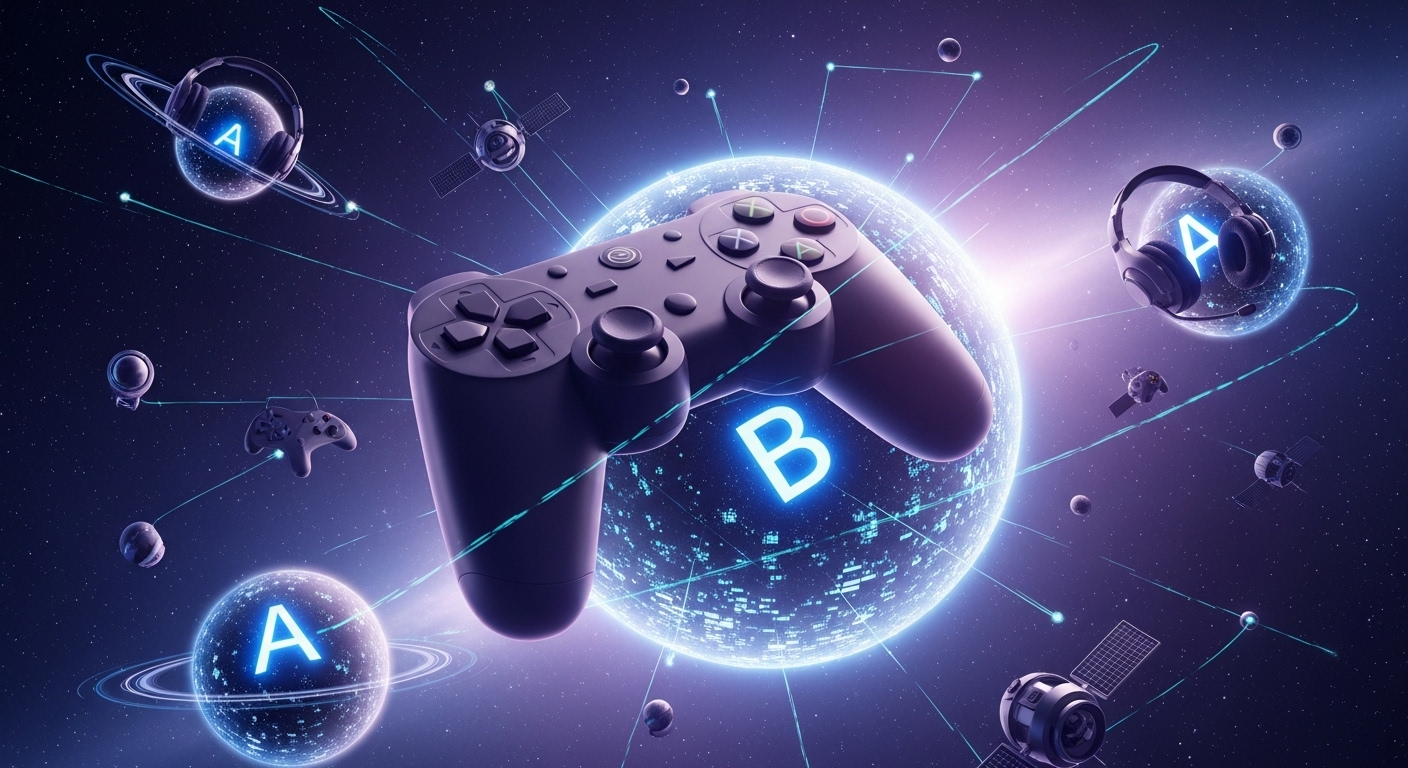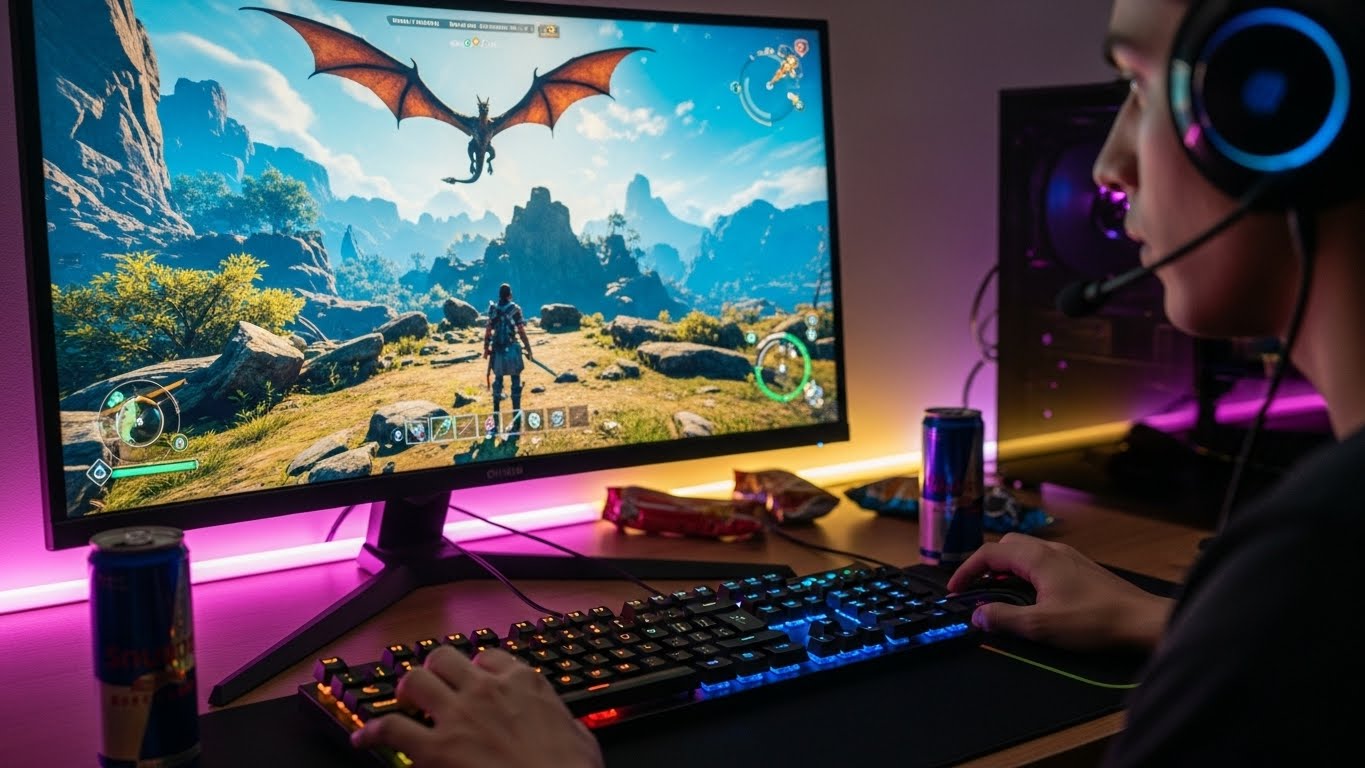Gaming has transformed from a niche pastime into one of the largest cultural and economic forces in the modern world. What was once dismissed as a form of distraction for children has now become a multibillion-dollar industry that rivals, and in many cases surpasses, the film and music industries combined. The journey of gaming from the early days of simple pixelated screens to the complex and emotionally driven experiences of today tells a fascinating story about technology, creativity, and human imagination.
The Birth of Gaming
The history of gaming began humbly in the mid-twentieth century. The earliest electronic games were experiments created by scientists and engineers exploring the potential of computers. In 1958, “Tennis for Two,” a simple game displayed on an oscilloscope, allowed players to control a dot bouncing across the screen. It was primitive, yet it hinted at something profound — the idea that computers could entertain as well as calculate.
By the 1970s, gaming began its commercial journey. Arcades filled with machines like “Pong” became social hubs for young people. Pong, with its two paddles and a bouncing square “ball,” was simple but addictive. The success of Pong sparked an entire industry. Companies like Atari, Namco, and Nintendo emerged as early pioneers, bringing gaming into malls, bowling alleys, and eventually into homes. The release of the Atari 2600 in 1977 marked a turning point, as gaming moved from public arcades to living rooms across the world.
The Golden Age of Arcades
The late 1970s and early 1980s are often referred to as the golden age of arcade gaming. During this period, iconic titles like “Space Invaders,” “Pac-Man,” “Donkey Kong,” and “Galaga” captivated millions. The simple yet challenging gameplay, colorful graphics, and competitive spirit fueled a cultural phenomenon. Arcades became more than just a place to play; they were a social experience where friendships were formed and rivalries were born.
This era also gave rise to the first gaming celebrities. Players competed for high scores and bragging rights, while developers became household names. Games were designed to test skill and endurance, with difficulty levels that demanded precision and quick reflexes. The sound of electronic bleeps and the clinking of coins defined a generation.
However, this rapid expansion led to saturation. By the early 1980s, the market was flooded with low-quality games, leading to what became known as the video game crash of 1983. The industry’s future seemed uncertain. Yet, out of this decline came one of the greatest comebacks in entertainment history.
The Rise of Home Consoles
Nintendo’s release of the Nintendo Entertainment System (NES) in 1985 revived the gaming industry. The NES brought with it a level of polish and creativity that had been missing from many earlier titles. Games like “Super Mario Bros.,” “The Legend of Zelda,” and “Metroid” set new standards for storytelling and gameplay. They introduced characters and worlds that would become cornerstones of gaming culture for decades.
Nintendo’s approach focused on quality control, ensuring that each game met a high standard of fun and functionality. The introduction of the cartridge format allowed for innovation and expansion. With the NES, gaming became a staple of childhood around the world, and for many, it was their first introduction to interactive storytelling.
Following Nintendo’s success, other companies like Sega entered the market, sparking the first great console wars. The battle between the Sega Genesis and the Super Nintendo Entertainment System defined the 1990s. Each company pushed the limits of technology and creativity, offering unique experiences and characters. Sonic the Hedgehog became Sega’s answer to Mario, emphasizing speed and attitude. Meanwhile, Nintendo continued to refine its formula, creating timeless classics like “Super Mario World” and “Donkey Kong Country.”
The Dawn of 3D and the Rise of PlayStation
The mid-1990s marked another revolution — the shift from 2D to 3D graphics. With the advent of more powerful processors and graphic capabilities, games could now exist in three-dimensional space, offering players new levels of immersion. Sony entered the scene with the PlayStation in 1994, changing gaming forever. Sony’s console targeted an older audience, offering cinematic experiences that felt more mature than the cartoonish charm of Nintendo’s offerings.
Titles like “Final Fantasy VII,” “Metal Gear Solid,” and “Resident Evil” redefined what games could be. They blended storytelling, art, and gameplay into cohesive experiences that rivaled movies in emotional depth. Players were no longer just jumping on platforms or shooting aliens; they were embarking on epic adventures, uncovering mysteries, and exploring complex moral choices.
This period also saw the rise of PC gaming. The personal computer, once limited to work and education, became a platform for some of the most influential games in history. Strategy titles like “StarCraft” and “Age of Empires,” as well as first-person shooters like “Doom” and “Half-Life,” demonstrated the versatility of the medium. Online multiplayer games began to take root, laying the foundation for the connected gaming world we know today.
The Era of Online Play
As the internet became more accessible in the late 1990s and early 2000s, gaming entered a new era — the era of online connectivity. Players could now compete or cooperate with others across the globe. Titles such as “Counter-Strike,” “World of Warcraft,” and “EverQuest” created global communities where millions interacted daily. Gaming was no longer a solitary experience; it became a social ecosystem.
The rise of broadband internet made it possible to share updates, mods, and downloadable content. Developers could continually refine their games long after release, while players could express creativity by creating their own content. The sense of community deepened as message boards, forums, and later streaming platforms allowed players to share their passion for gaming in ways that transcended geography.
Consoles also embraced online play. Microsoft’s Xbox Live service revolutionized console gaming by offering a unified online network for matchmaking, voice chat, and achievements. It changed how people viewed gaming: it was no longer just about playing a game but about being part of an ongoing digital experience.
The High-Definition Revolution
The mid-2000s introduced the seventh generation of consoles, including the Xbox 360, PlayStation 3, and Nintendo Wii. These machines brought high-definition graphics, powerful hardware, and new control schemes. The graphical fidelity of games reached unprecedented levels, allowing for photorealistic environments and expressive characters.
The Nintendo Wii, in particular, changed perceptions of what gaming could be. Its motion-sensing controls made gaming accessible to people who had never considered picking up a controller before. Families played together, senior centers hosted Wii bowling tournaments, and the console became a cultural phenomenon. The idea that gaming was only for young people began to fade.
At the same time, storytelling in games became more sophisticated. Developers treated their projects as artistic expressions rather than mere products. Games like “BioShock,” “The Last of Us,” and “Mass Effect” offered complex narratives that forced players to question morality, identity, and the consequences of their actions. The line between games and cinema blurred as motion capture, orchestral soundtracks, and professional voice acting became standard.
The Rise of Mobile Gaming
As smartphones became ubiquitous in the late 2000s, another transformation occurred. Mobile gaming emerged as a dominant force. Games like “Angry Birds,” “Clash of Clans,” and “Candy Crush Saga” demonstrated that people didn’t need a console or PC to enjoy gaming. Accessibility was the key. With just a tap, anyone could play a game on their phone, anywhere and anytime.
This democratization of gaming brought new audiences into the fold. Millions who never owned a console became casual gamers. While traditional gamers often viewed mobile games as less serious, the impact was undeniable. The mobile market grew rapidly, generating enormous revenue and pushing developers to innovate in terms of simplicity and engagement.
Mobile gaming also paved the way for new business models. The rise of free-to-play games supported by microtransactions changed how games were developed and monetized. While controversial, this model proved lucrative, influencing even major console and PC titles.
Esports and Streaming Culture
Perhaps the most surprising development in modern gaming has been the rise of esports and game streaming. Competitive gaming has evolved into a global spectacle, filling stadiums and attracting millions of online viewers. Games like “League of Legends,” “Dota 2,” and “Counter-Strike: Global Offensive” have professional leagues, sponsorships, and prize pools worth millions of dollars.
Streaming platforms allowed gamers to become entertainers. Personalities who stream their gameplay became celebrities with massive followings. Streaming turned gaming into a form of participatory entertainment where the audience could interact directly with the player. The boundaries between creator and consumer blurred, forming a new digital culture centered around community and shared experiences.
Esports and streaming also legitimized gaming as a profession. Young people now aspire to become professional players or content creators. Universities offer scholarships for esports athletes, and global corporations sponsor teams. What was once a hobby has become a career path.
Virtual Reality and the Future of Immersion
The latest frontier in gaming is virtual reality. VR technology aims to place players directly inside the game world, offering experiences that were once the stuff of science fiction. While early VR systems were expensive and limited, advancements have made them more accessible. Titles like “Half-Life: Alyx” and “Beat Saber” showcase the potential of VR to redefine interaction and immersion.
Augmented reality has also found its place. Games that blend digital and physical worlds, like “Pokémon GO,” encourage players to explore their surroundings in new ways. These technologies represent a shift toward experiential gaming, where the goal is not just to play but to inhabit another world.
As technology continues to evolve, concepts like cloud gaming are changing the way games are delivered. Players no longer need powerful hardware; they can stream high-quality games directly to their devices. This accessibility opens the door to a future where gaming is as seamless as watching a movie or listening to music.
The Cultural Impact of Gaming
Gaming’s influence extends far beyond entertainment. It shapes art, music, fashion, and social interaction. The soundtracks of iconic games are performed by orchestras. Characters from games appear in movies and on merchandise. Virtual worlds have become spaces for self-expression and social connection.
Moreover, gaming has educational potential. Simulation games teach resource management and strategy, while narrative-driven games foster empathy by placing players in the shoes of others. Schools and institutions are exploring game-based learning as a tool for engagement and critical thinking.
Gaming also provides an outlet for creativity. Many games include tools that allow players to build, design, and share their creations. Communities built around games like “Minecraft” and “Roblox” have become digital playgrounds for imagination, where players are both consumers and creators.
Challenges and Controversies
Despite its successes, the gaming industry faces ongoing challenges. Issues such as addiction, online toxicity, and crunch culture within development studios raise ethical concerns. The debate over microtransactions and loot boxes continues, with many arguing that such systems exploit players. Representation and inclusivity are also central topics, as developers strive to create games that reflect diverse perspectives and experiences.
Another ongoing conversation centers around the impact of violent games. While extensive research has failed to establish a direct link between violent games and real-world aggression, public concern persists. However, many experts emphasize that games can serve as healthy outlets for stress and creativity rather than causes of harm.
The industry also grapples with technological barriers. As games grow in complexity, development costs skyrocket. Independent developers struggle to compete with massive studios, though digital distribution and crowdfunding have opened new opportunities for smaller voices to be heard.
The Emotional Power of Games
What truly sets gaming apart from other forms of media is its interactivity. Players are not passive observers but active participants. This agency creates emotional connections that are unique to the medium. When a player makes a choice that affects the outcome of a story or loses a beloved character due to their own actions, the impact is deeply personal.
Games can evoke joy, fear, sadness, and wonder. They can tell stories of heroism and heartbreak, of loss and redemption. Titles like “Journey,” “Life is Strange,” and “Red Dead Redemption 2” demonstrate the emotional depth that interactive experiences can achieve. Gaming is not just about winning or losing; it’s about feeling.
The Future of Gaming
Looking ahead, the possibilities seem endless. Artificial intelligence promises to make worlds more responsive and characters more lifelike. Procedural generation will create infinite worlds to explore. Cross-platform play will unify players across devices, breaking down barriers between ecosystems.
The convergence of gaming with other digital trends such as the metaverse hints at a future where games are not just entertainment but central to how we live, work, and socialize. Virtual spaces may become extensions of our daily lives, where people gather for concerts, education, or even work meetings.
Yet, amid all this innovation, the essence of gaming remains the same: the desire to play, to explore, to connect, and to experience stories in ways no other medium can offer. The future will bring new technologies and trends, but the heart of gaming — creativity and connection — will always endure.
Conclusion
From the flickering pixels of the past to the lifelike worlds of today, gaming has undergone a transformation unlike any other medium. It has evolved from a hobby into a global culture that influences technology, art, and human relationships. Whether played on a console, a computer, a phone, or in virtual reality, gaming continues to inspire millions around the world.
The story of gaming is far from over. Each generation brings new innovations and new dreams. It is a journey of imagination without limits, driven by the universal human desire to play, to create, and to connect. Gaming is not just a pastime; it is a reflection of our shared creativity — an ever-evolving art form that continues to define the digital age.



